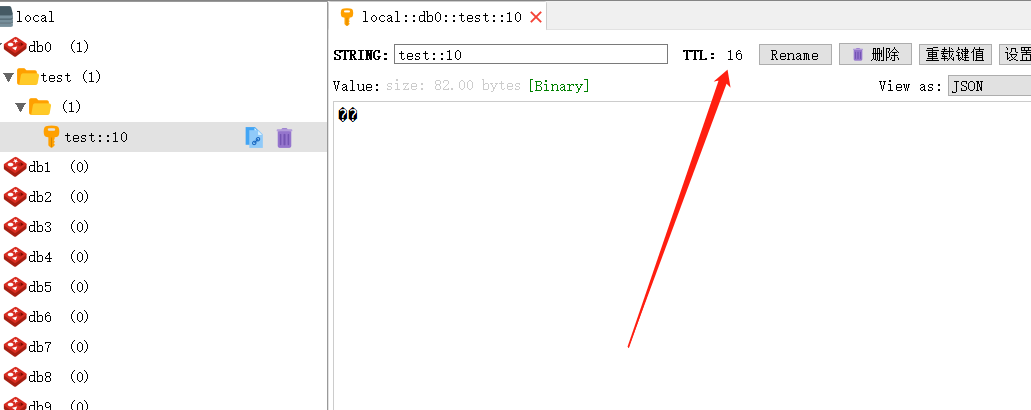SpringBoot2.0 @Cacheable 添加超时策略
逻辑比较简单,废话不多说,直接进入正题:
需求:SpringBoot 利用注解使缓存支持过期时间 (同@Cacheable @CachePut 等注解用法)
第一步:新建注解CacheExpire

1 @Retention(RetentionPolicy.RUNTIME) 2 @Target({ElementType.TYPE, ElementType.METHOD}) 3 public @interface CacheExpire { 4 5 /** 6 * 缓存过期时间 7 */ 8 long expire() default 0; 9 10 /** 11 * 仅当采用expire字段设置过期时间时生效 12 */ 13 TimeUnit timeUnit() default TimeUnit.SECONDS; 14 15 /** 16 * 利用cron设置过期时间 17 */ 18 String cron() default ""; 19 20 }
第二步:扩展CacheInterceptor拦截器

1 public class CacheExpireInterceptor extends CacheInterceptor { 2 3 private final StringRedisTemplate template; 4 5 public CacheExpireInterceptor(StringRedisTemplate template) { 6 this.template = template; 7 } 8 9 @Override 10 public Object invoke(MethodInvocation invocation) throws Throwable { 11 Object invoke = super.invoke(invocation); 12 setExpire(invocation); 13 return invoke; 14 } 15 16 public void setExpire(MethodInvocation invocation) { 17 try { 18 Method method = invocation.getMethod(); 19 CacheExpire expire = method.getAnnotation(CacheExpire.class); 20 if (expire != null && (expire.expire() > 0 || !StringUtils.isEmpty(expire.cron()))) { 21 Cacheable cacheable = method.getAnnotation(Cacheable.class); 22 Object key = getKeyGenerator().generate(invocation.getThis(), method, invocation.getArguments()); 23 Set<String> names = new TreeSet<>(); 24 names.addAll(Arrays.asList(cacheable.cacheNames())); 25 names.addAll(Arrays.asList(cacheable.value())); 26 for (String name : names) { 27 String tag = name + "::" + key; 28 if (expire.expire() > 0) { 29 template.expire(tag, expire.expire(), expire.timeUnit()); 30 } else if (!StringUtils.isEmpty(expire.cron())) { 31 CronTrigger trigger = TriggerBuilder.newTrigger().withSchedule(CronScheduleBuilder.cronSchedule(expire.cron())).build(); 32 Date date = new Date(); 33 long time = trigger.getFireTimeAfter(date).getTime() - date.getTime(); 34 if (time > 0) { 35 template.expire(tag, time, TimeUnit.MILLISECONDS); 36 } 37 } 38 } 39 } 40 } catch (Exception e) { 41 e.printStackTrace(); 42 } 43 } 44 45 }
第三步:扩展ProxyCachingConfiguration配置文件

1 @Configuration 2 public class ProxyCachingExpireConfiguration extends ProxyCachingConfiguration { 3 4 private final StringRedisTemplate template; 5 6 public ProxyCachingExpireConfiguration(StringRedisTemplate template) { 7 this.template = template; 8 } 9 10 @Bean 11 @Override 12 public CacheInterceptor cacheInterceptor() { 13 CacheInterceptor interceptor = new CacheExpireInterceptor(template); 14 interceptor.configure(this.errorHandler, this.keyGenerator, this.cacheResolver, this.cacheManager); 15 interceptor.setCacheOperationSource(this.cacheOperationSource()); 16 return interceptor; 17 } 18 }
第四步:新建Service开始使用

1 @Service 2 public class TsetService { 3 4 @CacheExpire(expire = 20) 5 @Cacheable(value = "test") 6 public Object get(Long id) { 7 return System.currentTimeMillis(); 8 } 9 10 }
第五步:Postman调用

继续惯例:欢迎交流,QQ:1107628852(加备注博客)
